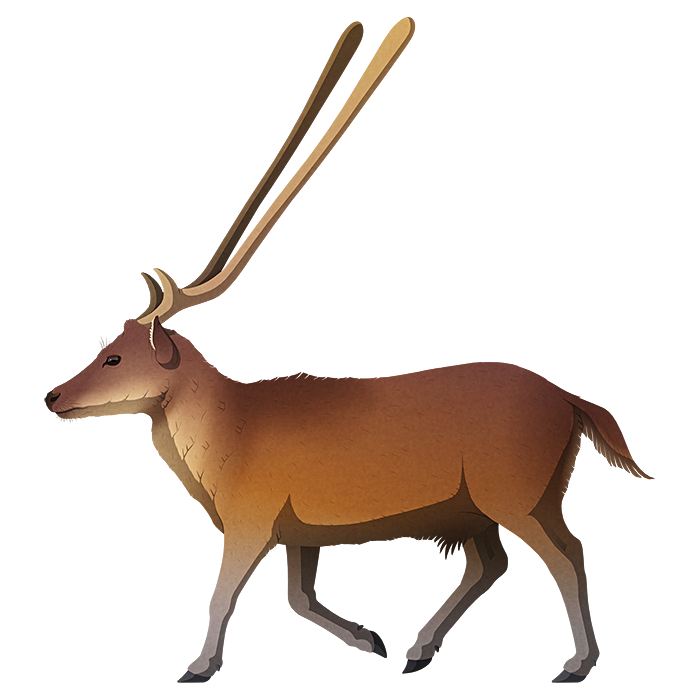The island of Crete has been isolated since about 5.3 million years ago, when the dried-out Mediterranean Sea refilled — but at that time it started off as several much smaller islands, and only gained its larger modern shape thanks to tectonic uplift in the Pleistocene.
It only had a small number of endemic land mammals during the Pleistocene, whose ancestors all seem to have reached the island by swimming or rafting from southern Greece: dwarf elephants, a small hippo, an otter, a shrew, large mice, and several deer.
Deer are surprisingly good swimmers, and seem to have colonized Crete by the mid-to-late Pleistocene 300,000 years ago. They were by far the most diverse mammals on the island, with eight species in six size classes, each living in different types of habitat and specializing in their own ecological niche in a similar situation to the older Italian Hoplitomeryx. Their anatomy was modified so much that it’s unclear what their original ancestors actually were, or even if they were all descended from a single colonization or multiple arrivals, but they seem to have been close relatives of the huge Megaloceros.
All eight species are usually classified in the genus Candiacervus, and the smallest and weirdest of them all was Candiacervus ropalophorus.
Ironically for a cousin of the giant deer it was tiny, just 40-50cm tall at the shoulder (1’4″-1’8″), with proportionally short stocky legs more like a goat. It seems to have convergently evolved to occupy the same niche as wild goats do elsewhere, clambering over steep rocky mountainous terrain and eating tough prickly vegetation.
The antlers of the males were huge for their body size, around 77cm long (2’6″), and they were simplified into a long straight beam with only a single small spike at the base. The far ends were wider and rounded, described as club-like or spatula-like, and their odd shape suggests they probably weren’t much use for fighting and wrestling like in other deer. Instead they seem to have been more just for show and visual display.
Meanwhile a second dwarf species, Candiacervus reumeri, had more standard-looking antlers and probably still fought each other.
The largest species, Candiacervus major, was as big as a modern wapiti, with a shoulder height of around 1.65m (5’5″) and body proportions much more like a normal long-legged deer. Its antler shape isn’t actually known yet, but since it lived in thickly forested areas of Crete the stags may have had more streamlined antlers to avoid getting snagged on low branches.

The various Candiacervus species went extinct towards the end of the Pleistocene, around the start of the Last Glacial Maximum 21,500 years ago. Originally this was thought to be long before humans ever reached the island, but more recent discoveries have brought that into question.
Humans do actually seem to have encountered living Candiacervus ropalophorus, since petroglyphs in Asphendou Cave appear to depict the dwarf deer and so must be at least 21,500 years old. Additionally, even older stone tools on the southern coast of Crete from at least 130,000 years ago match those made by archaic humans (probably Homo erectus) who may have arrived over sea from northern Africa.
So it’s possible the weird Cretan deer survived alongside humans for some time, but then their habitat started to degrade as the climate shifted rapidly colder and drier. Some remains show that many individuals were suffering from secondary hyperparathyroidism and metabolic bone disease, signs of severe nutritional deficiencies, and their weakening population may have ultimately been unable to deal with both the malnutrition and the additional pressures of human hunting.

